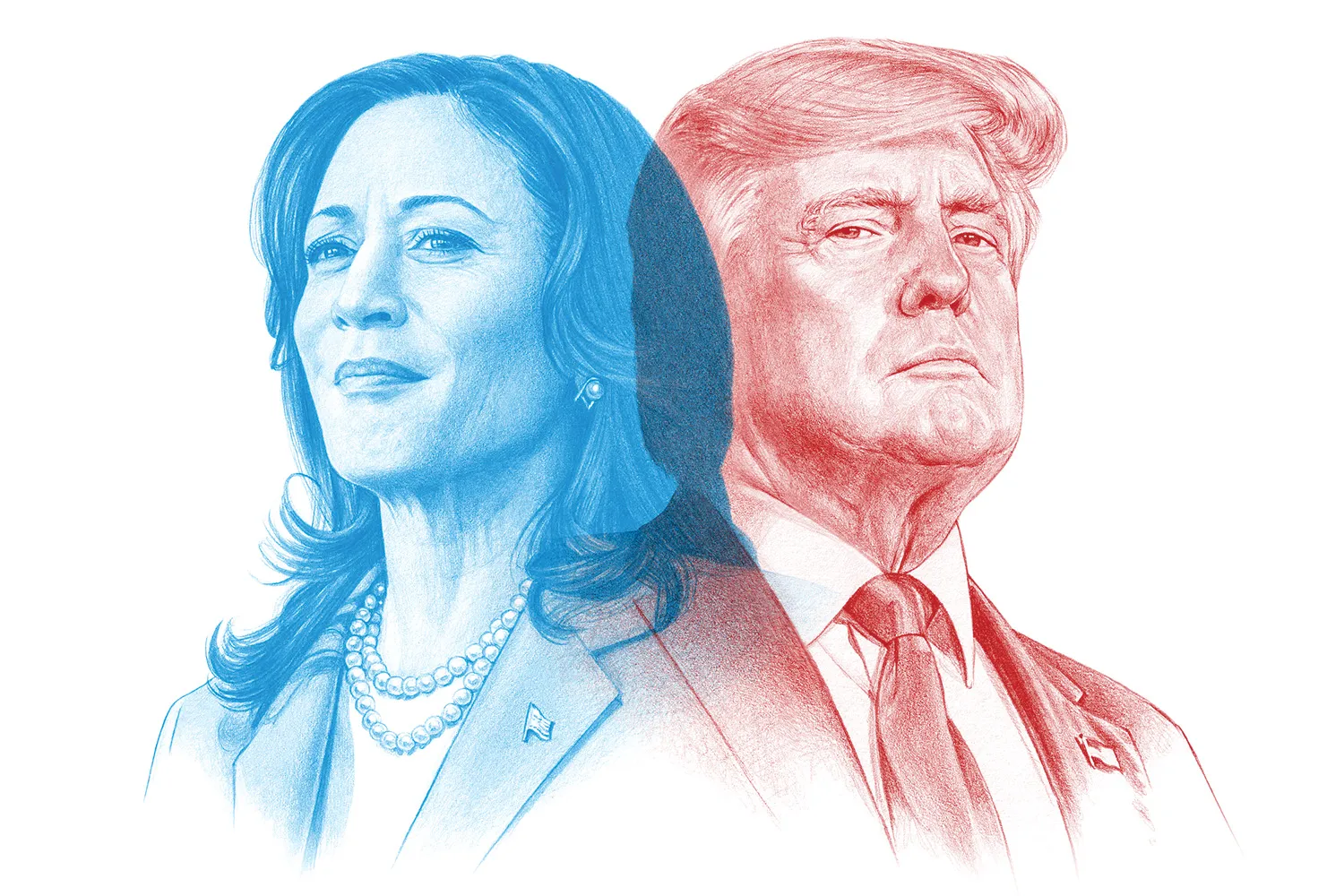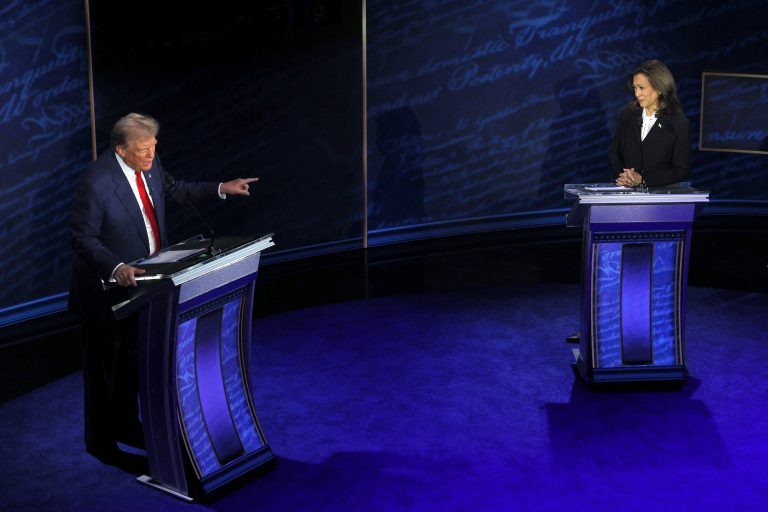In precisely four weeks, the majority of the United States of America will vote for the most consequential election in its history. Equally, its fate lies with just a plentiful number of voters residing in the states, also known as “swing states”.
Hanging on balance is the very idea of the country—the reasoning behind its rise and dominance,
1. Will the balance of the separation of power be tilted exorbitantly towards the executive?
2. Will key departments of the federal government be dismantled, such as the department of education, fermenting the ideological project of one of the candidate’s sycophants’ pet projects?
3. Will the United States have a populist, autocratic, and kleptocratic regime in tandem?
4. Will civil liberties be curbed—to serve the interests of the few members of the family and coterie?
5. Will the woman’s right to decide pertaining to their body be a quest of the past?
6. Will immigrants live in constant fear of being thrown out of the very country that propagates a dream of everlasting prosperity?
7. Will the most pivotal decisions be taken on a social media platform—owned by the most influential surrogates of one of the presidential contenders?
8. Will the United States go through an economic cataclysm—due to policies that will harm the most except benefit the few?
9. Will the United States become a silent observer of global atrocities? Or will the United States survive yet again, as it has from the war of independence to the civil war, the two great wars, the cold war, and the war against terror, and now an ideological struggle—perpetuated to the inculcation of multiple societal backlashes?
The 2024 Presidential election is being held simultaneously with the election for 33 seats in the Senate, and all the seats in the House of Representatives.
The most vital of all is the individual who occupies the resolute desk in the oval office. The race for its occupant is the closest it could get, comparatively to the two previous elections—polling data of this current period of the last two elections showed a clear lead outside the margin of error; however, the very predicament at this stage is contrary to the past—nationally, both of the candidates are within the margin of error, with Ms. Harris leading Mr. Trump consistently for a couple of weeks in the polls after the recent debate.
Presidential Election
The hype and attention surrounding national polling brushes a misleading picture—who better to ask than those who, like me, had anticipated a particular verdict in 2016? The very reasoning behind the mechanism of the “electoral college” was that so the smaller states could have an equal footing in the process of governance. At their behest, the practice has been rather ineffective in the 21st century, twice giving the mantle of office to candidates who did not carry the confidence of the majority of the voters (Mr. Bush and Mr. Trump).
On the cusp of this moment in time, according to the national polling average of the New York Times, Ms. Harris leads Mr. Trump by 3 points, with Ms. Harris garnering 49% support and Mr. Trump at 47%—to underscore once more this number is within the margin of error, and gauging at the national polling number is a barometer with no substantial heft.

In hindsight, focusing only on the seven toss-up states is crucial.
The polling averages of the states are as followed,
| Swing States | Polling Leader | 2020 Election Results | 2016 Election Results |
| N.C. (16 E.V.) | Trump < 1 | R +1 | R +4 |
| Pa. (19 E.V.) | Harris < 1 | D +1 | R +1 |
| Nev. (6 E.V.) | Harris +1 | D +2 | D +2 |
| Ga. (16 E.V.) | Trump +2 | D < 1 | R +5 |
| Mich. (15 E.V.) | Harris +1 | D +3 | R < 1 |
| Wis. (10 E.V.) | Harris +2 | D +1 | R +1 |
| Ariz. (11 E.V.) | Trump +2 | D < 1 | R +4 |
A laymen’s interpretation of the polling data would be that Ms. Harris is poised to secure the required 270 electoral college votes; nonetheless all states are within the margin of error—exemplifying the volatility and uncertainty in the election.
Important for a victory for Ms. Harris is in two ways winning the three blue wall states, which are—Pennsylvania, Michigan, and Wisconsin. A victory in these states is strikingly a greater hurdle for Ms. Harris than it was for Mr. Biden, as the latter was able to connect with the white working-class voter due to his Scranton upbringing, especially amongst union members, a group the former is not able to relate to due to several reasons, principally due to her resonance to the culture of the Bay Area.
Additionally, central to note is that Ms. Clinton made a catastrophic blunder by calling all Trump supporters a “basket of deplorables,” alienating the white voters (without a college degree)—it gravitated them to the Republican Party, further entrenching this demographic in the rhetoric of Mr. Trump. Thus, Ms. Harris will have to be cognizant of her projection—with fewer talking points that personify the values and ideas the coastal Americans keep sacrosanct, pondering more towards the class of people (Midwesterners) who are going through economic hardship; living on paycheck to paycheck and social safety net; and dwindling down on the politics of identity—which is subservient comparatively to their economic status.
Three subjects are driving the narrative of this election: economy, abortion, and immigration (and the state of democracy).
Economy
Vernacularly, Ms. Harris has narrowed the gap pertaining to the question of “who they trust more to handle the economy.” As per the FT-Michigan Ross poll, 44 percent of the respondents trust Ms. Harris with the economy, while 42 percent support Mr. Trump. To add upon, just two-thirds (67 percent) viewed Mr. Trump as an advocate for the wealthy, while half viewed Ms. Harris as a better spokesperson for the middle class.
Stance of the Candidates (Credit NYTimes):
Kamala Harris: Ms. Harris supports the Biden administration’s spending on infrastructure and renewable energy. She wants to ban price gouging, create incentives to build housing, expand tax credits for middle- and low-income households, and offset the costs by increasing taxes on corporations and wealthy Americans.
Donald Trump: Mr. Trump enacted a large package of tax cuts as president and pursued protectionist trade policies, including a trade war with China. He wants to cut taxes further and enact more sweeping tariffs. He says he would not cut Social Security or Medicare benefits but has not provided a plan to keep the programs solvent.
Abortion
Reproductive rights are a strength for Ms. Harris, both due to her initiatives during the Biden Administration and her ability to effectively connect to the voters with an emotive connotation. The aforementioned claim is substantiated with recent polling conducted by KFF Health Tracker—on “who they trust to do a better job on the abortion issue,” respondents overwhelmingly favor Ms. Harris with 53 percent versus 34 percent Mr. Trump carries with him; a point to note is that this is a wider lead than that Mr. Biden had regarding issues of reproductive rights.
Stance of the Candidates (Credit NYTimes):
Kamala Harris: Ms. Harris supports a federal right to abortion and wants to prevent states from banning the procedure before fetal viability. She has regularly spoken out in favor of abortion rights, including making the first official visit to an abortion clinic by a president or a vice president.
Donald Trump: Mr. Trump’s Supreme Court appointees enabled the overturning of Roe v. Wade, ending federal protections for abortion. He has said that he would not sign a federal abortion ban but that states should be allowed to enact any restrictions they choose.
Immigration
The border crisis is singlehandedly a strength for Mr. Trump, who has gargantuan support amongst the white lower strata due to this very issue.
Paramount reasoning behind Ms. Harris’s lackluster support is due to the fact that she is perceived to have been assigned as the “Border Tsar.” The matter of fact is contrary to the notion. Nevertheless, the record uptick in migrants did impede the workings of the administration—due to the constant hammering of its policy inadequacies. Ironically, a very conservative border bill was formulated by Senator James Lankford with bipartisan support from the Democrats, lo and behold, only to fall prey to the personal endeavors of the leader of the MAGA movement.
As per a Fox News poll, 44 percent of respondents favored Mr. Trump over Ms. Harris, who received only 34 percent, when asked about their candidate of choice on immigration policy.
Stance of the Candidates (Credit NYTimes):
Kamala Harris: Ms. Harris denounced many of the Trump administration’s immigration policies but has endorsed President Biden’s decisions to restore some of them, such as restrictions on asylum seekers, as illegal border crossings have reached record levels. She has tried to address root causes of migration by securing private funding for development projects in Latin America.
Donald Trump: Mr. Trump enacted sweeping anti-immigration policies when he was president, including separating migrant children from their parents. If elected again, he wants to round up millions of undocumented immigrants and detain them in camps before deporting them en masse.
To reiterate, the election’s outcome hinges on the decision of just a handful of voters.
Who will win? It will only be known on the 5th of November. Voter enthusiasm and turnout in the swing states will be key for the victory for any candidates—Ms. Harris especially wishing that a “October surprise” doesn’t just spur from the blue—from domestic issues, to even a full-blown conflict in the Middle East could hinder and depreciate the prospect for Ms. Harris, as she is the incumbent.
Notwithstanding the victor, which is ambiguous—a conclusion can be drawn out at this moment that the United States is the most fragile, sectarian, and polarized—illiberal it has ever been since the Civil War, and forces that are antithesis to the substratum of the Washington Consensus—(an open market, secular liberal democratic country with liberty and justice for all) are gaining ground each and every day—being supported by half the country, signifying the plethora of backlashes the idea of liberalism is facing due to the very freedom it prescribes to its inhabitants.

